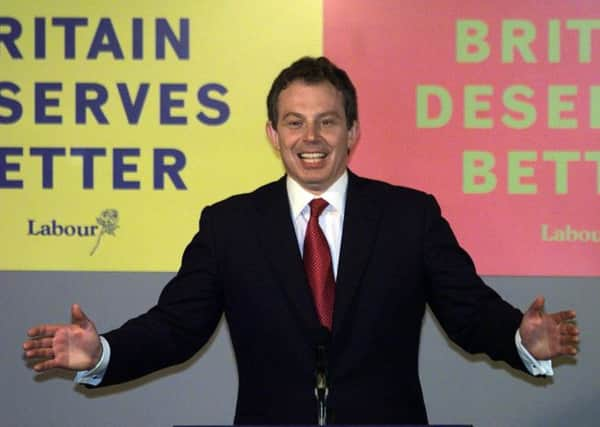Matt Qvortrup: Are Scots ready for Nordic model?


Especially Yes Scotland has made claims about the effect of independence and of how it will improve education.
In the comprehensive document Scotland’s Future from November last year the pro-independence side asserted that: “With independence – and the powers over the tax and benefits system – we want to extend the support we give to our youngest children and their parents, to expand childcare provision and deliver additional rights and opportunities for parents, so that Scotland matches the very best in Europe.” The same document also promises “reduced class sizes in the early years of primary school”.
Advertisement
Hide AdAdvertisement
Hide AdAnxious not to be outdone, Labour’s Margaret Curran, the shadow secretary of state for Scotland, has promised that her party will introduce 25 hours of free childcare a week for every three and four-year-old and 15 hours a week for vulnerable two-year-olds. None of the other unionist parties have outlined detailed proposals for what their priorities will be in the event of a No vote.
Whether one can trust one side over the other is an open question. But to understand the consequences of a possible Yes vote it is instructive to look at the philosophical arguments underpinning the SNP’s vision of the so-called Scandinavian system they want to emulate.
In his New Statesman Lecture in March this year Alex Salmond spoke of his wish to carry out a “Scandinavian-style transformation of childcare policies”. This is not the only time the First Minister and his government has looked to our eastern neighbours for inspiration. In 2013 Nicola Sturgeon appointed Jon Kvist of the University of Southern Denmark to advise the current SNP administration on welfare.
What are the policies that an independent Scotland under SNP-leadership is likely to pursue? What will Professor Kvist suggest to his Scottish paymasters?
If current policies in the Scandinavian countries – Denmark, Norway and Sweden – are anything to go by, we can expect more money to be allocated to childcare and to higher education.
Childcare is likely to see the most drastic change. In Sweden the maximum you pay for childcare is 1260 Swedish Krona – or £113 – per month. This is – as hard-pressed Scottish families know – considerably lower than in Britain. According to the Family and Childcare Trust, an average British family pays £315 per month for full-time childcare.
Primary school class sizes are also lower; 20 in Denmark, 19 in Sweden – against 25.9 in Britain, according to the OECD.
Another central argument for independence is cheaper higher education. In the aforementioned Scotland’s Future, the SNP promised that it would “protect free tuition fees for Scottish students”. In Denmark they have gone one step further. In addition to free tuition, the Danish students receive a stipend of approximately £580 per month.
Advertisement
Hide AdAdvertisement
Hide AdThis spending spree comes at a cost. The Scandinavian countries have some of the highest levels of income tax in the developed world. In both Denmark and Sweden the average tax rate is over 55 percent – even for the lowest paid workers.
Some – including former Prime Minister Gordon Brown – have criticised Salmond for wanting to create a Nordic welfare state with Irish levels of taxation. Some may counter that Norway has shown that it is possible to combine high welfare spending with relatively low taxation. But although Scotland is the second-largest oil producer in Europe few analysts believe that Edinburgh can emulate Oslo. Scotland’s oil reserves fall short of Norway’s. They cannot pay for Scandinavian-style welfare.
The only realistic option is higher taxation. If an SNP government is re-elected after a Yes vote in the referendum, we can expect taxes to increase to pay for the spending. But this may not deter voters. What many opponents of independence have not considered is that higher taxes may be popular if they pay for good services.
In Sweden taxes are not considered too high. For several years Save the Children has put Sweden at the top its league table of places where it is best to be a parent. Sweden is sixth on the United Nations Human Development Index (the UK is 16th); and ranks second in its table of child wellbeing in rich countries. Maybe Sweden proves that it’s worth paying high taxes. And maybe a majority of the Scottish voters are willing to make a change to a more Scandinavian system. They get to choose on 18 September.
• Matt Qvortrup is a constitutional lawyer and author of Referendums and Ethnic Conflict